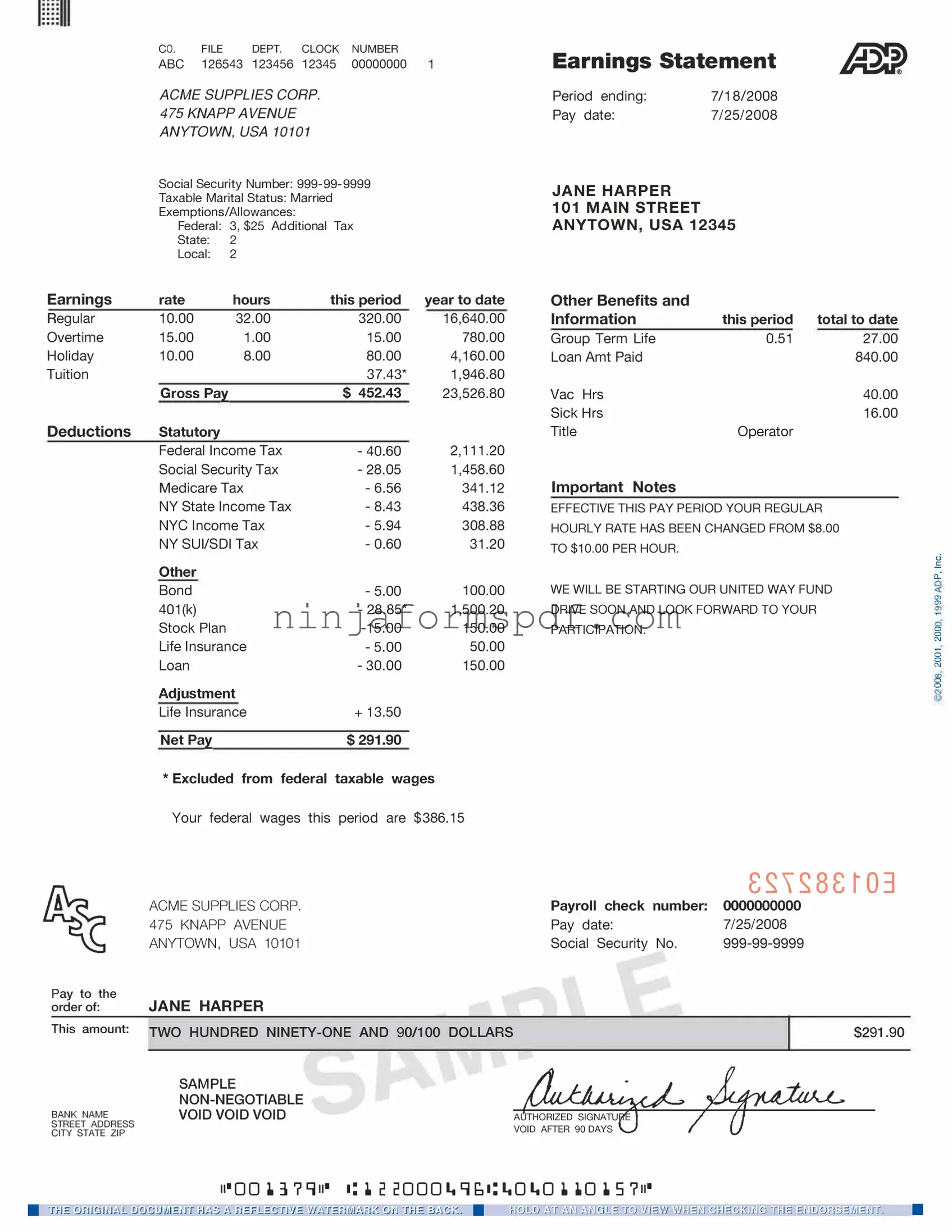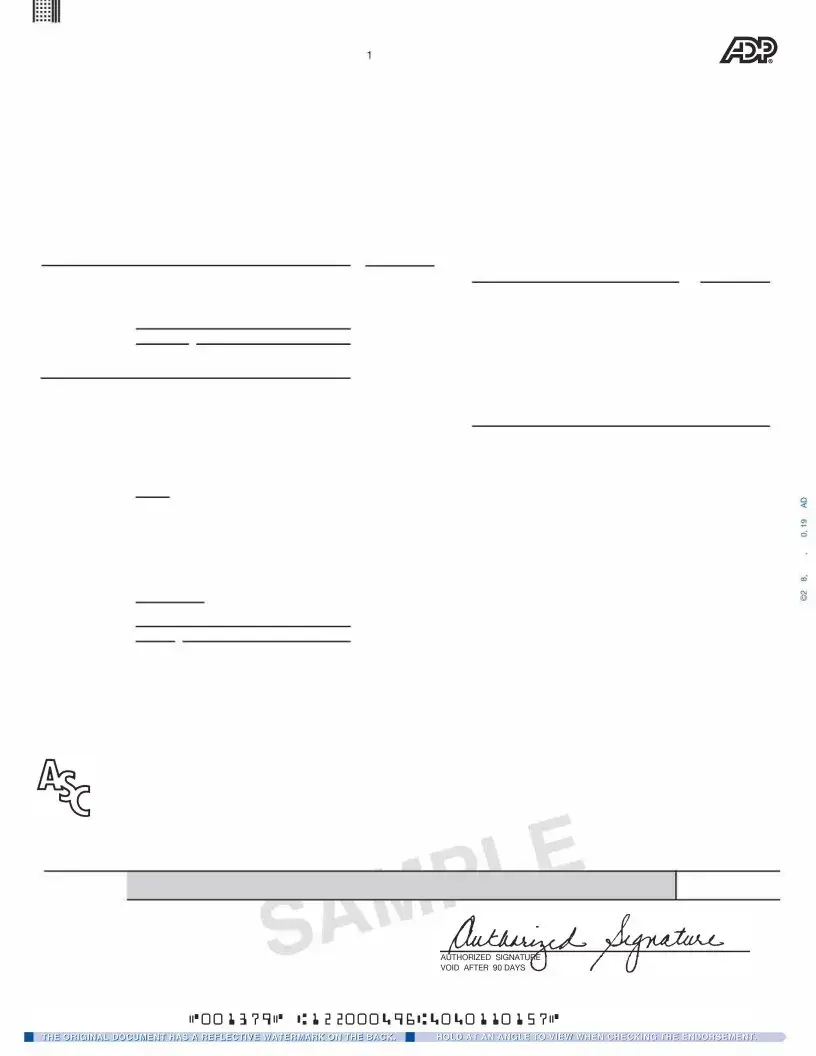A Wage and Tax Statement, commonly known as a W-2 form, bears resemblance to the ADP Pay Stub form in that both provide essential information about an individual's earnings and taxes deducted over a year. However, the W-2 form is an annual summary provided by employers to employees for tax filing purposes, while a pay stub is a more frequent earnings statement.
Similarly, the 1099-MISC form, used for reporting payments made to independent contractors, echoes the ADP Pay Stub in function. It outlines the income an individual receives from a particular source, akin to how a pay stub details earnings. The key distinction lies in the 1099-MISC's application for non-employee compensation.
The Earnings Statement from other payroll providers shares a direct likeness with the ADP Pay Stub by detailing an employee's wages, tax deductions, and net pay during a pay period. Despite differing formats or providers, the fundamental purpose of showcasing an employee's compensation remains consistent.
Bank Statements, while primarily summarizing financial transactions in an account, can serve a similar purpose to the ADP Pay Stub when it comes to verifying income. Both documents contain critical financial information, with bank statements offering a broader view of an individual’s financial health beyond just earnings.
A Loan Application form, on the other hand, indirectly connects to the ADP Pay Stub as it often requires proof of income through pay stubs. This demonstrates the pay stub’s role in establishing an individual's ability to repay, reflecting its utility beyond employment and into financial assessments.
The Employment Verification Letter, which confirms an individual’s employment status, position, and salary, complements the ADP Pay Stub. While the letter provides a formal acknowledgment of employment, the pay stub gives detailed, periodic documentation of earnings.
Direct Deposit Forms share a unique relationship with the ADP Pay Stub. Where direct deposit forms authorize the transfer of an employee’s earnings into their bank account, the pay stub provides a detailed record of the earnings deposited. Each form facilitates and confirms the transfer of wages from employer to employee.
The Tax Return Form, particularly the 1040, while primarily for reporting annual income, tax deductions, and tax payments to the IRS, can be supported by the information found in ADP Pay Stubs. Income details in pay stubs help individuals accurately report their earnings and calculate taxes owed.
Lastly, Unemployment Benefit Applications often require applicants to submit recent pay stubs as proof of prior employment and wages earned. This illustrates the pay stub’s importance in verifying past income, a critical factor in determining eligibility and benefit amounts for unemployment assistance.

